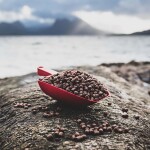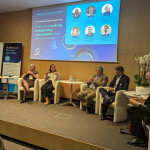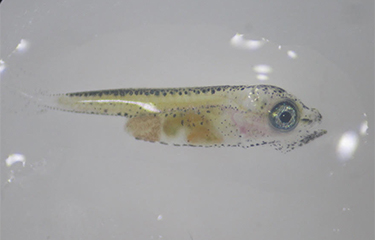Researchers from the University of Chile’s FAVET-Inbiogen Laboratory have been able to map the complete genome of the native Seriola lalandi for the first time in the world, which has implications for advancing the ability to farm the fish in land-based recirculating aquaculture systems (RAS).
The program has been developed within the framework of the Seriola Strategic Technological Program, sponsored by the Chilean economic development agency Corfo, and led by the fish cultivation center Acuicola del Norte (“Aquaculture of the North,” Acuinor). Since 2006, the company has carried out the farming of Seriola lalandi - better known internationally as yellowtail, amberjack, or hiramasa – in the Atacama Desert, the most arid desert on earth.
Acuinor now expects to employ the latest information to genetically improve Seriola lalandi – a specialized species, highly sought-after in Asian markets and related cuisine due to the quality of its white meat, which is rich in polyunsaturated oils. The company hopes to use the genetic information to boost growth by at least 25 percent in the RAS-cultivated fish.
The result, after more than six years of research, will now provide the basis for higher profitability in the RAS cultivation processes, including lower consumption rates of feed and fish that will grow in a faster, more sustainable way, the company said. Knowledge of the species’ genome will also help the firm avoid long-term inbreeding problems, it said. Currently, the cultivation of Seriola lalandi from egg to five kilograms can take between 14 to 15 months in the controlled environment of the RAS.
“We started from scratch to define the genetic selection of animals to implement a genetic improvement program for the Seriola lalandi, which would ensure the sustainability of the project,” FAVET-Inbiogen Researcher Víctor Martínez told SeafoodSource. “This is the first of its kind for this native species, so we needed to start researching from the species’ basic genetics.”
The project, Martínez said, represents a complete mapping of the entire genome at a high level.
“We have developed a genotyping platform that is absolutely valid at the national and international level. This biotechnological development has been tested in various populations of Seriola internationally, being effective in capturing genetic variability at the level of the entire genome,” he added. “This took into account the development of a reference genome not available to date, as well as the linkage maps that describe the chromosomes of this species.”
The research team also developed a sexing tool that has been tested in the New Zealand and Australian populations of Seriola, with identification surpassing 95 percent, Martínez noted. The tool is considered essential for the management and determination of parameters associated with reproductive aspects of male and female specimens.
Acuinor – located in northern Chile’s Region III, 20 kilometers from the city of Caldera, in the Atacama Desert bordering the Pacific coast – has established a stock of breeders with a genetic improvement plan. The entire process – from hatch to harvest – includes the production of high-quality larvae and juveniles in a stable continuous fashion and with high survival rates, in addition to on-land fattening for a planned production of 30 metric tons (MT) per year, Acuinor Commercial Manager Muriel Teixido previously told SeafoodSource.
Annual exports are around 250,000 juveniles and 16 tons of finished product, with the main markets for the export of live Seriola lalandi juveniles including the Netherlands, Germany, and Mexico. Shipments have also been made to the United States, Denmark, and Dubai, and a finished product is mainly sent to Italy weekly.
The company is in the construction and implementation phase of the first on-land fattening center in the Atacama Desert, aiming to harvest 1,000 kilograms a week of five-kilogram specimens, reaching a production of 200 MT a year.
The project is seen as a reference that may be replicated in the rest of the marine fish species, with the potential to generate sustainable economic activity in the country. According to company executives, it is Chile’s first marine fish culture that will be raised in a recirculation system throughout the entire production cycle. Acuinor was set up in the warmer north of the country, as Seriola lalandi is a species that lives in warmer waters, as opposed to Chile’s flagship seafood product, salmon, which is farmed in the country's south.
As such, the explanation behind Corfo's involvement is two-fold: the development of the local economy, and to create a blueprint for future similar projects in Chile to be able to diversify the country’s productive matrix towards other species.
Photo courtesy of Acuinor







